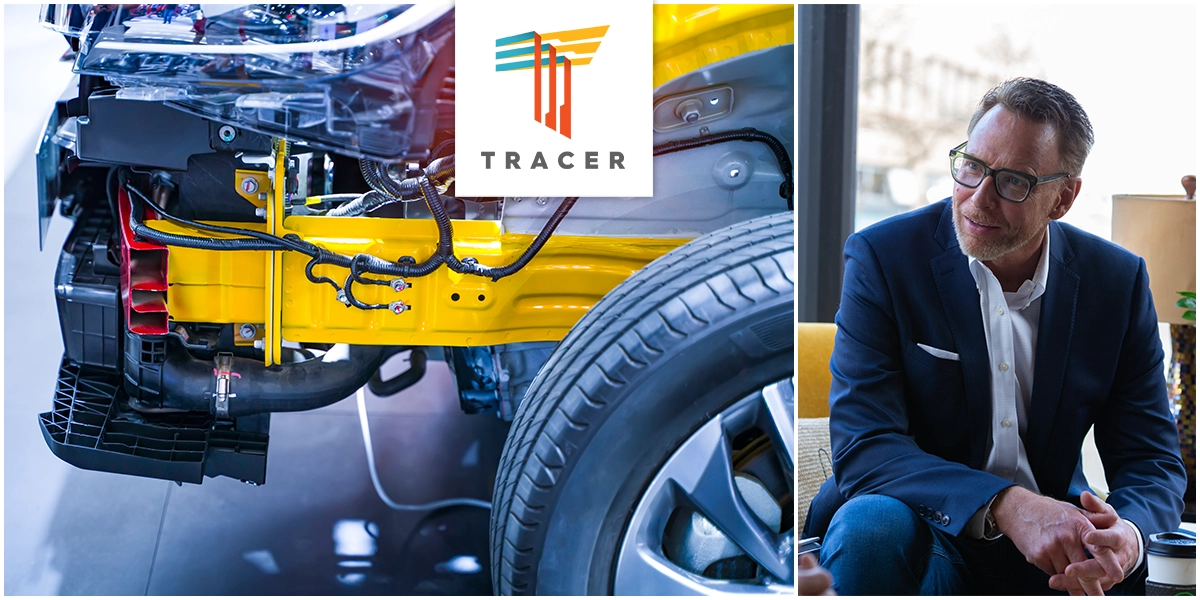The automotive customer journey has massive room for improvement when it comes to satisfying the customer expectations set by other industries through digitalization and e-commerce. The traditional automotive retail model lags far behind in these respects, and will experience more pressure to meet these demands as customer preferences evolve. Trends in autonomous driving, shared mobility, connectivity and electrification are poised to further complicate the relationship between customer expectation, customer experience and customer satisfaction.
How can OEMs get ahead of these expectations and address growing customer frustration with the automotive customer journey? The answer, surprisingly, may lie in the post-sale/product support phase of the customer relationship.
Like it or not, the customer relationship is digital
Customers now use multiple digital channels in every stage of the automotive customer journey map—from initial consideration and buying decision to product support and beyond. In fact, customers experience the greatest frustration when digital options aren’t available at key junctures—for example, within the service experience.
It’s in a company’s best interests to fill these digital gaps. Multichannel solutions increase opportunities for OEMs and dealer networks to understand customers better.
By engaging with customers in the right way, at the right time, throughout all phases of the automotive customer journey, companies can improve purchase satisfaction and create long-term brand loyalty. The product support and service stages in particular provide ideal opportunities to bring customers back to the dealership and refer your products to friends and family, to build more meaningful relationships with buyers and to guide them toward undiscovered offerings which improve the product experience.
McKinsey & Company found effective post-sale product and service support is even more influential than purchase experience when it comes to improving customer satisfaction scores (CSAT). For a relatively minor investment, you can quickly and easily improve customer loyalty and increase your bottom line by optimizing the product support experience.
Unfortunately, many dealerships and OEMs fail to capitalize on these product support opportunities. The post-sale experience is, by far, the most powerful and overlooked stage of the automotive customer journey.
How digital consumers are shifting the automotive customer journey
In the not-too-distant past, a dealership visit was the cornerstone of the car-buying journey and primary to the brand relationship. Now, the era of this simplistic automotive customer journey is rapidly coming to an end.
Mobile offerings increasingly replace in-person visits during the initial research and information stage. Online research makes it unnecessary to physically visit the dealership as customers narrow down their options. The dealership only becomes a necessary touchpoint when the buyer needs to test drive a car in person. According to McKinsey, the number of online sources used along the car-buying process from 2013 to 2019 increased from 2.4 to 3.1.
Research shows most customers would complete even more of the auto journey online if possible. The COVID-19 pandemic pushed consumers further into online platforms for the research and product comparison that fuels a final purchase choice.
Unfortunately, OEMs and dealerships struggle to digitize most stages of the customer journey while industries like tech, retail and fashion deliver fully customized, data-driven product experiences.
OEMs and dealerships are hesitant to fully integrate the offline and online customer experience. These efforts are further obstructed by:
- Legacy systems in need of transformation
- Outdated dealer laws
- Lack of dealer participation
- Old-digital infrastructure
- A lack of digital alternatives to test driving
Why integrating the offline and online auto customer journey is crucial
One only needs to examine the vehicle service experience to measure the disconnect between customer expectations and industry reality.
Consumers who are most satisfied spend 2.5 hours or less at the dealer for service, according to a 2018 Service Industry Study by Cox Automotive. Most time spent in the automotive customer journey relates not to the purchase but the maintenance and repair of the vehicle. Reducing the time involved in maintenance and repair visits is one of the best ways dealerships can become more competitive and improve customer retention.
Preventative maintenance alerts, repair status notifications and AI repair procedures (to increase speed, accuracy and reduce the need for callbacks) are just three features offering massive potential experience improvements. To date, all three remain widely unexplored.
The Cox Automotive study outlines additional ways dealerships could leverage product support visits, including:
- cross-selling services
- implementing automated service reminders and recall integration to improve customer awareness and satisfaction
- offering amenities such as complimentary detailing and loaner vehicles
- letting customers know what they’ll need at service appointments to reduce untimely surprises and frustration
This model demands a central information portal and unified customer profiles—a complex transformation, yes, but the enhanced CX ecosystem on the other side would give OEMs and dealerships a better chance to observe and understand customer behaviors while offering customers greater convenience and total access to all of a brand’s digital channels.
It would also extend the customer relationship far beyond physical dealership interaction, providing the right product support at the right time, creating opportunities for up-selling and cross-selling, and eliminating the need for customers to repeatedly reintroduce themselves during the product support stage of the automotive journey—a frustrating activity that erodes brand loyalty.
Troubleshooting common product support pain points
As it stands, many customers view the product support process as an uncertain commitment of money and time. Making an appointment, dropping off and picking up a vehicle, a lack of mobility options, TBD completion times and TBD costs are common pain points in the automotive customer journey.
An empowered product support staff—one that could manage customer information on demand—would increase the efficiency and reduce the friction of service experience. It would also make it easier to measure and improve staff performance across all touchpoints. Product information management (PIM) software could serve progress updates so customers would know when to expect service completion and when to pick up their vehicle.
Online scheduling with service check-in via tablet, text or email alerts could also increase capacity and reduce wait times. Digital transformation could even improve ride replacement services for both customers and dealerships.
And the single best thing manufacturers can do to improve the service experience is…
Above all, manufacturers and dealers should leverage available technology to improve the diagnosis and repair of their products. Product complexity has spun wildly out of control in the last 10-15 years, and veteran technicians are leaving the field and not being replaced, creating a monstrous technician shortage in the not-distant future as trial-and-error repair strategies cost service operations untold profits.
But tools and solutions exist to reduce the time involved in diagnosis and repair while improving first-time fix rate (FTFR) scores. Better technician information and AI diagnostic tools offer immediate—and dramatic—improvements to the service experience. These tools:
- make repair more profitable for flat-rate technicians
- increase repair bay throughflow
- Increase the profitability of repair operations where they’re employed
Many major OEMs have deployed cutting-edge diagnostic tools in their end-of-the-line factory testing, but the industry-at-large has barely scratched the surface of the potential savings afforded by AI diagnostics.
How does product support improve your bottom line?
Quiz time. Which of the following approaches is most cost efficient? Which approach is the least cost-efficient?
- selling a product to an angry, dissatisfied former owner?
- selling a product to someone who’s never heard of your brand?
- or selling a product to a loyal, long-term customer?
We’ll assume we’ve all come to the same conclusion with this question.
This is where evaluating your current automotive customer journey and improving your product support service can have a dramatic effect on your bottom line. By connecting key customer touchpoints, you create a closed loop that personalizes the customer experience from start to finish.
Product information management strategies become measurable results when customers are met in the right way at the right time during their automotive customer journey. Product information software platforms unlock analytics and customer information insights, allowing OEMs and dealers to engage in a meaningful and personalized way. And accommodating customer needs in real time can consistently boost overall revenue.
Final thoughts
The new mobility landscape demands that OEMs and dealers address challenges before becoming less competitive. Brands using new technology to make the automotive customer experience more intuitive and rewarding—from initial research to information inquiry to service, maintenance and repair—remain competitive and improve customer loyalty in unprecedented ways.
There’s little room for error, and coming up short can seriously impact customer convenience, loyalty and revenue. Every customer visit counts more than ever in making the experience profitable and satisfying as the sheer volume of competitors continues to increase and auto buyers spend more time online and less at the dealership.
Product support is such a neglected stage of the automotive customer journey because once the product’s been sold to a single buyer, it makes short-term sense to shift focus towards selling the same product to new, additional buyers. But, eventually, every product owner re-enters the research and purchase stage. Those with a positive experience of your brand are infinitely more likely to purchase from you again.



